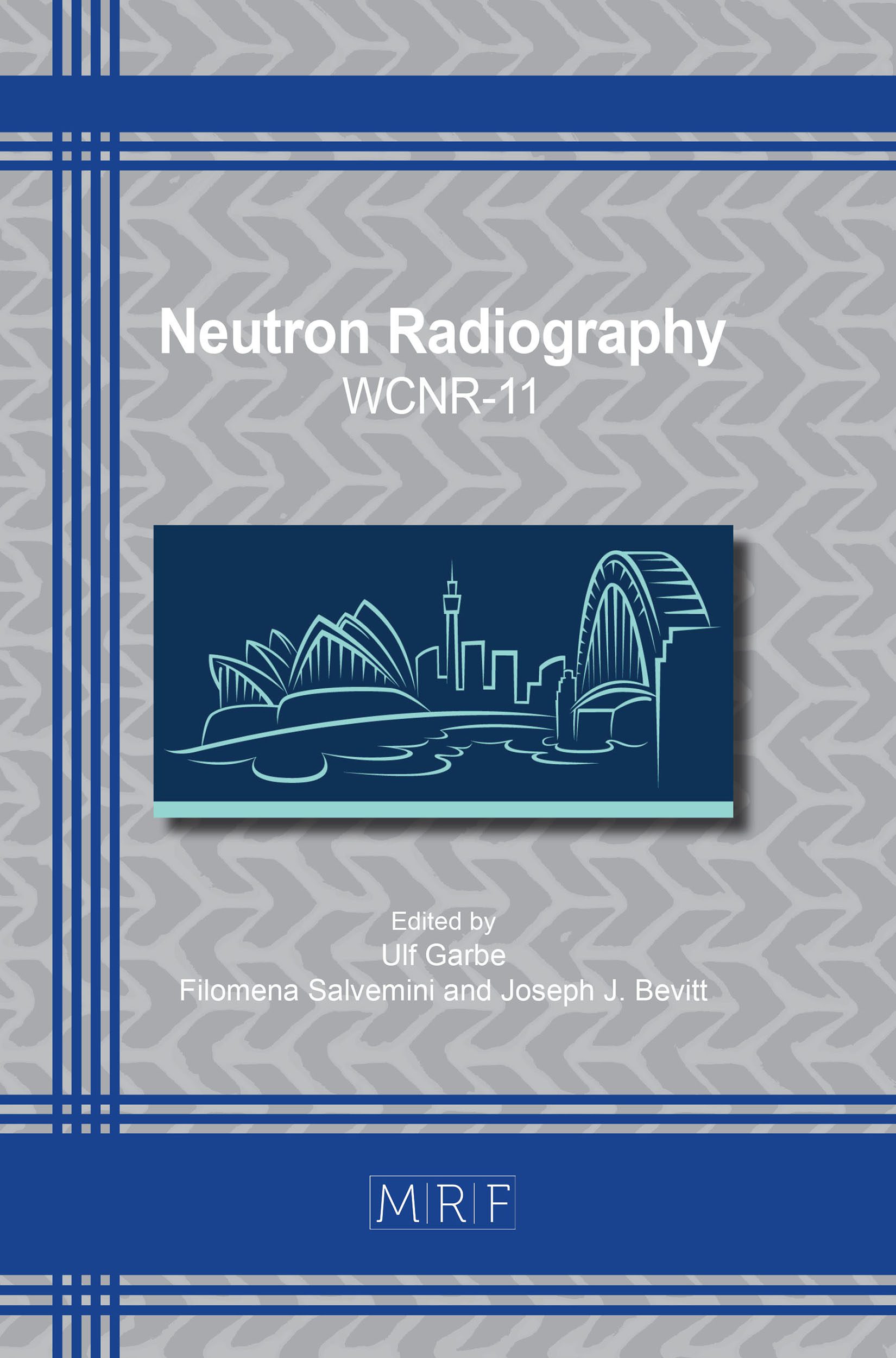Gamma Discriminating Scintillation Screens for Digital Transfer Method Neutron Imaging
Aaron Craft, Christian Grünzweig, Manuel Morgano, William Chuirazzi, Eberhard Lehmann
download PDFAbstract. A collaborative project between Idaho National Laboratory (INL) and Paul-Scherrer Institute (PSI) is investigating a new type of scintillation screen that uses ZnS scintillator material with a dysprosium neutron converter instead of traditional prompt converters such as 6Li. Such a screen exposed to a neutron beam creates a latent image by neutron activation of the dysprosium in the scintillator screen. The activated screen is transported into a camera box allowing the camera to read a digital image from the photons emitted by the activated scintillation screen. Such an imaging system combines modern camera-based system architecture with the approach of traditional indirect transfer method radiography. The results show for the first time that the combination of dysprosium with a scintillation material like ZnS can produce light which is measurable under common camera-based detection conditions and that neutron radiographic images of reasonable quality can be produced. The resolution was poorer than expected at ~ 300 μm, but is on the order of the desired resolution of 100 μm. Potential improvements and additional converter materials may be investigated in the future that could increase the light output and improve spatial resolution.
Keywords
Neutron Imaging, Scintillator Screen, Indirect Transfer Method, Digital Imaging, Post Irradiation Examination, Nondestructive Evaluation
Published online 1/5/2020, 6 pages
Copyright © 2020 by the author(s)
Published under license by Materials Research Forum LLC., Millersville PA, USA
Citation: Aaron Craft, Christian Grünzweig, Manuel Morgano, William Chuirazzi, Eberhard Lehmann, Gamma Discriminating Scintillation Screens for Digital Transfer Method Neutron Imaging, Materials Research Proceedings, Vol. 15, pp 74-79, 2020
DOI: https://doi.org/10.21741/9781644900574-12
The article was published as article 12 of the book Neutron Radiography
![]() Content from this work may be used under the terms of the Creative Commons Attribution 3.0 licence. Any further distribution of this work must maintain attribution to the author(s) and the title of the work, journal citation and DOI.
Content from this work may be used under the terms of the Creative Commons Attribution 3.0 licence. Any further distribution of this work must maintain attribution to the author(s) and the title of the work, journal citation and DOI.
References
[1] A.E. Craft and J.D. Barton, “Applications of neutron radiography for the nuclear power industry,” Physics Procedia 88 (2017) 73-80. https://doi.org/10.1016/j.phpro.2017.06.009
[2] A.E. Craft, D.M. Wachs, M.A. Okuniewski, D.L. Chichester, W.J. Williams, G.C. Papaioannou, & A.T. Smolinski, “Neutron radiography of irradiated nuclear fuel at Idaho National Laboratory.” Physics Procedia, 69 (2015) 483-490. https://doi.org/10.1016/j.phpro.2015.07.068
[3] A.E. Craft, G.C. Papaioannou, D.L. Chichester, & W.J. Williams, “Conversion from film to image plates for transfer method neutron radiography of nuclear fuel.” Physics Procedia, 88 (2017) 81-88. https://doi.org/10.1016/j.phpro.2017.06.010
[4] P. Vontobel, M. Tamaki, N. Mori, T. Ashida, L. Zanini, E.H. Lehmann, & M. Jaggi, “Post-irradiation analysis of SINQ target rods by thermal neutron radiography.” Journal of nuclear materials, 356(1-3) (2006) 162-167. https://doi.org/10.1016/j.jnucmat.2006.05.033
[5] E.M. Baum, H.D. Knox, and T.R. Miller, “Chart of the Nuclides,” 16th ed., Knolls Atomic Power Laboratory (2002).
[6] E.H. Lehmann, P. Vontobel, and L. Wiezel, “Properties of the Radiography Facility NEUTRA at SINQ and its Potential for Use as European Reference Facility.” Nondestructive Testing & Eval 16 (2001) 191-202. https://doi.org/10.1080/10589750108953075































